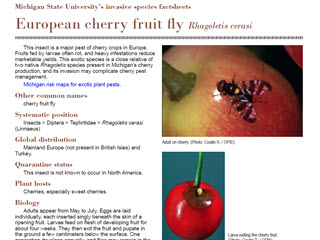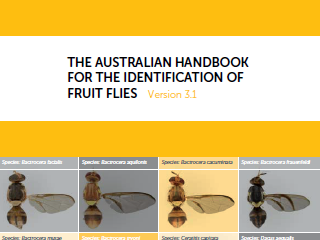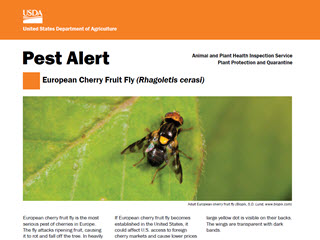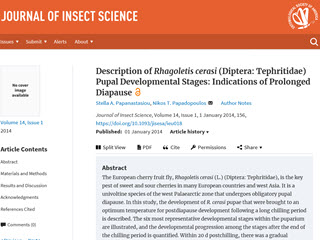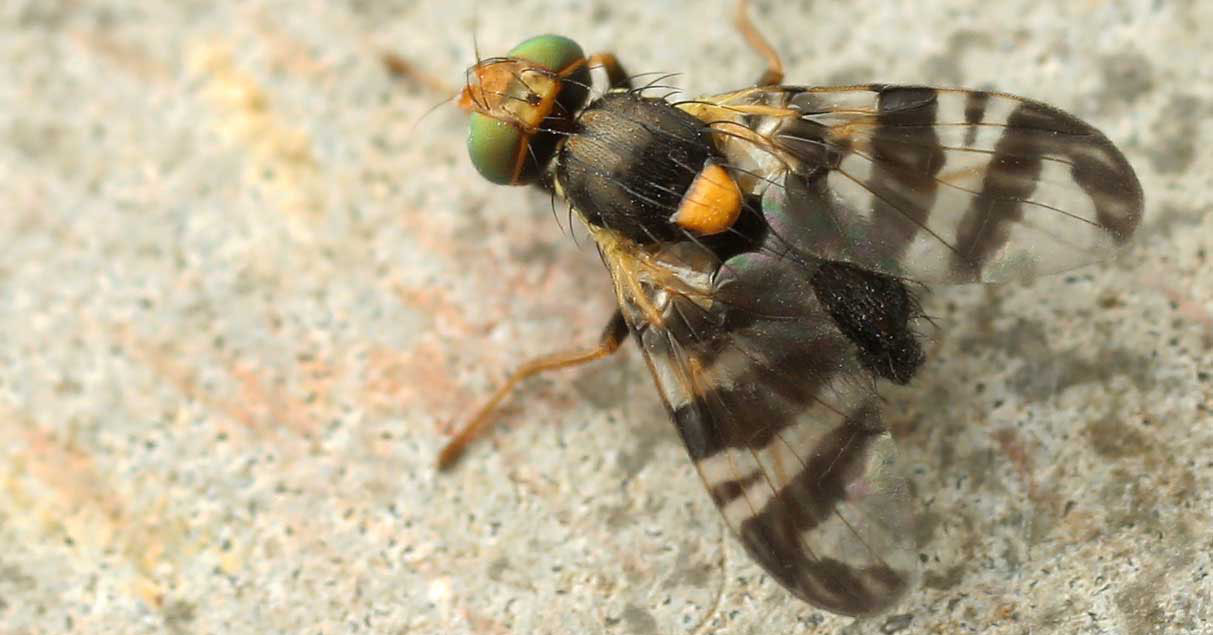
IDaids supporting identification of the European cherry fruit fly
Potentially one of the most serious threats to U.S. cherry production, the European cherry fruit fly, Rhagoletis cerasi, was initially detected in New York along the Niagara River in 2017. It was previously identified in Canada, marking the first record of this pest’s presence in North America. Before then, it was only found in Europe and parts of Asia. APHIS PPQ European cherry fruit fly surveys are currently underway in the United States.
The fly's hosts are primarily species of Prunus (stone fruits) and Lonicera (honeysuckle). Among Prunus spp, the pest's impact on sweet and tart cherries are of the most concern. If the fly becomes established, it could spread to major cherry-producing regions throughout the U.S., affecting both domestic supplies and cherries for export. At present, the Northeastern and North Pacific regions have cherry fruit fly pest management programs in place, as native cherry fruit flies are already there. But that isn’t the case for the San Joaquin Valley, California’s main cherry-producing region. The damage is caused after the female lays an egg on a fruit and the larva burrows in it to feed. The fruit becomes mushy and/or bruised and has apparent exit holes. See these IDaids to learn more about this pest.
European Cherry Fruit Fly Rhagoletis cerasi
Michigan State University Extension, United States of America
This fact sheet covers identification, biology, and symptoms on cherries.
The Australian Handbook for the Identification of Fruit Flies - Version 3.1
Plant Health Australia
The newly revised "Australian Handbook" compiles identification information for 65 fruit fly species of biosecurity concern to Australia. See page 142 (PDF page 144) for a screening aid highlighting diagnostic characteristics of the European cherry fruit fly.
Pest Alert: European Cherry Fruit Fly (Rhagoletis cerasi)
United States Department of Agriculture (USDA)
Includes information about life cycle, damage, and potential host range and at-risk areas of the U.S.
Description of Rhagoletis cerasi (Diptera: Tehpritidae) Pupal Developmental Stages: Indications of Prolonged Diapause
Journal of Insect Science, Oxford Academic, Great Britain
Article discusses pupal metamorphosis stages; accompanied by illustrations and photos. Downloadable as a PDF.
